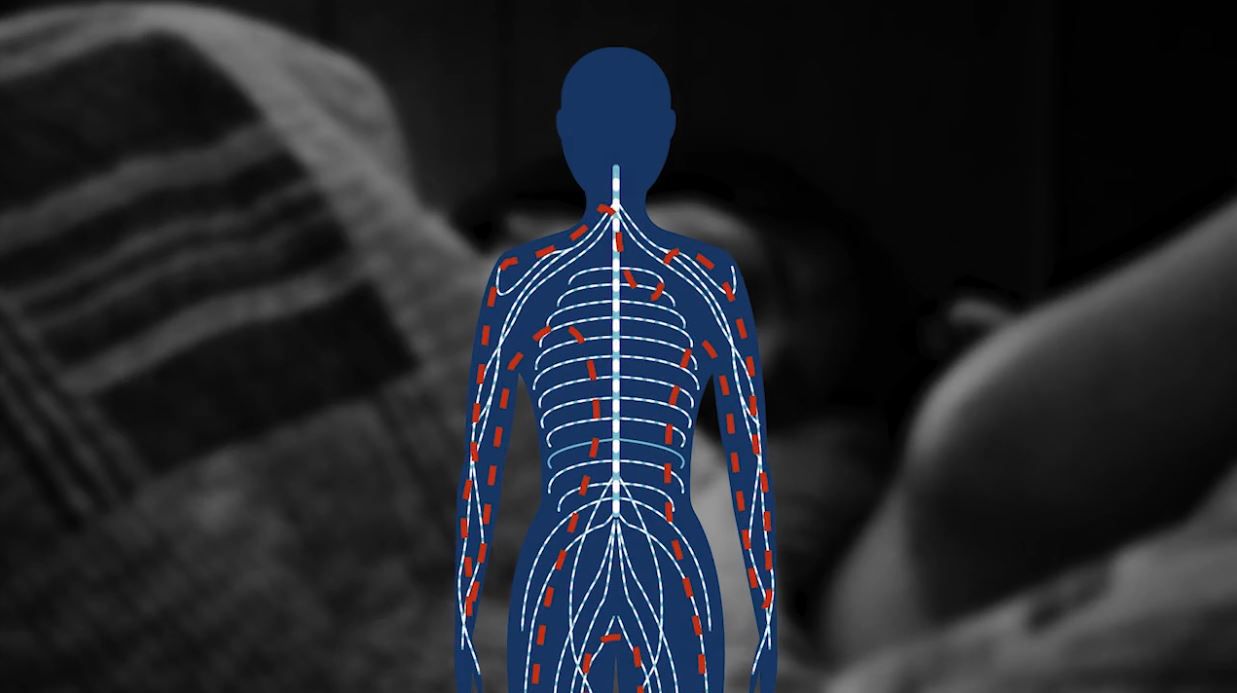Sleep Cycles: Our Brains and Bodies on Sleep
For most of human history, it was thought that the brain essentially shuts down during sleep - but scientists now know it’s quite active. Experts divide sleep into two general phases: non-REM sleep and REM sleep. REM stands for rapid eye movement because during this stage, the eyes move quickly in all directions. During non-REM sleep, in contrast, there’s very little eye movement.
Each of the five sleep stage is characterized by specific brain waves. The stages cycle through several times over the course of the night. “It’s almost as if it were this beautiful symphony and you hear the orchestra playing in different instruments or play at different times through some repetition,” said Dr. Ana Krieger, who specializes in sleep medicine at Weill Cornell Medicine in New York.
NON-REM SLEEP
STAGE 1
Stage 1 sleep is the transitional stage between wakefulness and sleep. During this stage, both the mind and body start to slow down. The muscles relax and the brain starts producing lower-frequency alpha and theta waves, which help us calm down. We may experience muscle spasms or the sensation of falling, and are still easily awoken. Stage 1 typically lasts less than 5 minutes.
STAGE 2
In stage 2, brain wave continues to slow with bursts of rapid brain activity called sleep spindles and K complexes. These bursts are thought to play a role in long term memory consolidation and sensory processing, and to protect the brain from waking up from sleep. Body temperature decreases and heart rate slows down. It’s best to wake up from naps after stage 2 sleep, before going into the deeper stages - which occurs about 20-30 minutes after falling asleep.
STAGES 3 & 4
Stage 3 and 4 sleep, the most restorative stages, are known as deep sleep. We need about one and a half to two hours of deep sleep a night. In stage 3, very slow brain waves called delta waves are interspersed with smaller, faster waves. By stage 4, the brain almost exclusively produces delta waves. Delta waves promote immune function and help us feel restored. During deep sleep, the body repairs muscles and tissues, stimulates growth and boosts immune function. You won’t experience any eye movement or muscle activity during these stages. Sleep talking and night terrors occur during stages 3 and 4. Sleepwalking also occurs in deep sleep . Sleepwalking can be dangerous, because the sleepwalker can accidentally hurt themselves through falling or touching a sharp object.
REM SLEEP
REM sleep, again, stands for rapid eye movement because the eyes dart quickly in all directions. It’s during this stage when most dreaming occurs. The brain becomes more active, heart rate and blood pressure increase, and breathing becomes fast and irregular. REM sleep also plays a role in learning; during REM, the brain consolidates and processes information to be stored in long-term memory.
According to the American Sleep Association, adults spend about 50% of our total sleep time in stage 2, about 20% in REM sleep, and the remaining 30 percent in the other stages.
The first sleep cycle of the night takes about an hour and a half, and the remaining cycles average between an hour forty minutes and two hours. As the night goes on, REM sleep periods lengthen and deep sleep periods get shorter. Adults need to go through four to five sleep cycles a night - which is about 6 to 9 hours of sleep.
While all of this is happening, a newly discovered process, called the glymphatic system, is actually cleaning toxins out of the brain. Scientists are still working to gain a more complete understanding of what’s happening in our brains and bodies when we sleep. “We’re just scratching the surface...the more we understand, the more we know that we don't actually know all the details,” Krieger said.
To learn more about the importance of sleep and how we can all get more of it, watch our full episode on sleep at YourHealthExplored.com.



